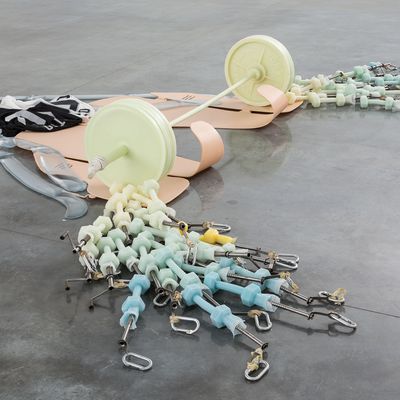
By the time Matthew Barney’s debut solo show opened at Barbara Gladstone’s Greene Street gallery in 1991, the work of this 24-year-old artist had already rocked my world. The previous year, in an otherwise unremarkable large group show in the now-defunct Althea Viafora Gallery in Soho, I saw a TV monitor depicting a naked male — Barney — scaling a rope to the ceiling, then descending over a shape of cooled Vaseline. Hanging there, he’d finger dollops of jelly and methodically fill all the holes in his body — eyes, ears, mouth, penis, anus, nose, navel. (I’d never thought of the penis as a hole before.) I saw a self in transformation, and, thunderstruck, I said to my wife, “This is one of the futures of art.” She looked up and said, “Yeah, but it’s so male.” It was the first time I saw Barney’s intricate syntax of endurance art, video, post-minimal and process art, which delivered a picture of a strange masculinity: conflicted, involuting, ludicrous, neutered, Kafkaesque. A tree fell within me; here was the art of the 1990s beckoning.
Now I see Barney as a mystic bridge between the ambition, absurdity, first-person identity politics, and pseudo-autobiographical Arabian Nights fiction of 1980s artists like Cindy Sherman, Robert Gober, Anselm Kiefer, Jean-Michel Basquiat, and Martin Kippenberger and the populism, love of beauty, craft, dexterity with scales large and small, unusual materials, and grand activism of 1990s artists like Kara Walker, Pipilotti Rist, Olafur Eliasson, Thomas Hirschhorn, later Robert Gober, and even Richard Serra — who actually appeared in one of Barney’s films. In those films, Barney brought us into the realm of genuine myth — the idiosyncratic inner life of an artist scaled up to match not just the swaggering stature of art-historical giants who came before but the operatic scale of the universe itself. In a way, Basquiat had been mythic — but only like Lou Reed was mythic. Barney was mythic like Jason and his Argonauts or Daedalus. And the full scope of that mythos appeared unmistakably in the epic, and epically weird, films themselves, into which Barney submerged himself totally.
His particular obsessions, though inspired, are less important than the size of the screen onto which he projected them (which is one reason you can see his legacy in such divergent contemporary offspring as Ryan Trecartin, Andra Ursuta, Elaine Cameron-Weir, Lucy Dodd, and Josh Kline). Barney’s work appears hermetic, but it often has to do with transforming one material into another against a resistant force — sugar into muscle and muscle fighting gravity, for instance. The bigger picture is of whole biological, mythical, religious, or industrial systems building up, breaking down, and evolving. To create this, he uses far-flung histories, characters, trades, sciences, and cultures; consider Barney as artist James Lee Byars reincarnated from a gold-leafed ambulance in the transept of a Detroit church, flaying himself and his now-ex-partner Björk with whaling knives; or his use of New Orleans marching bands, porn stars, cars crashing off bridges, then being dredged up, smashed, and cast again. The five-part, six-hour-plus Cremaster series (1994–2002) is essentially a multilevel Wagnerian narrative devoted to the millisecond of morphogenesis when, after about seven weeks in the womb, the reproductive organs either ascend into ovaries in females or descend into testicles in males. I watched the 1994 Cremaster 4 more than 75 times (I told you I was a fan) and surmise that the dandyish goat-man played by Barney (he crawls through goo, tap-dances, and tunnels under water), as well as the two motorcycle teams racing in opposite directions around the Isle of Man, are all metaphors for testes moving down in the body and ovaries up. The story ends in quiet stillness as the two cycle teams attach seven clear cords to Barney’s scrotum — perhaps the cremaster muscle controlling the testes — suggesting that the body in question is about to distend into a masculine one. This is the mad “maleness” my wife responded to and I fell in love with.
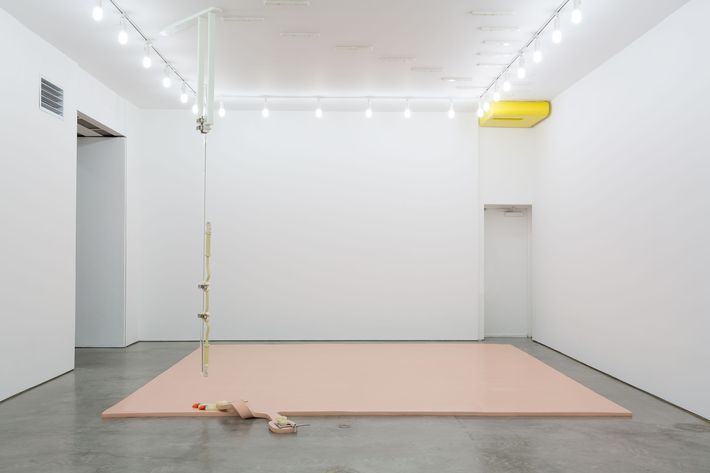
All these things came to fruition in Barney’s 1991 Gladstone debut. Now, at the current Gladstone Gallery, you can go back 25 years and witness that first New York show restaged in another space more or less the same way. I came away thinking it was much better than I thought it was the first time — and I loved it back then. Observe Barney in embryonic form yet with all the aspects of his art foreshadowed. Videos of him in matching white bra, panties, and terry-cloth turban playing the “Character of Positive Restraint”; donning a backless black evening gown and arm-length gloves dancing with a football blocking sled. Elsewhere, he evacuates his oral and anal cavities as pearls emerge from his mouth and rectum. Through all this, he is radically vulnerable yet untouchable, removed, an apparition at the end of the mind. One video depicts him being repeatedly attacked by a menacing football player; another shows him pumping a hydraulic jack into his own abdomen — both possible reenactments of Harry Houdini’s reportedly suffering a fatal surprise blow to the solar plexus. The longest video, Blind Perineum (suggesting all this is just him moving into the next sexual space between anus and genitals), shows Barney suspended from the gallery ceiling, naked, traversing the length and breadth of it, using ice-screws, eventually entering a walk-in freezer, squatting over a cameraman on a weight-lifting bench, inserting the last screw into his rectum — then seemingly crawling up his own anus to begin the performance anew. All the prodigious ingenuity of Barney’s materials are here: molded tapioca, cast sucrose, internally lubricated plastic, sternal retractors, vaginal specula, a flesh-colored wrestling mat, carabiners, a silicone-gel pectoral form, and “human chorionic gonadotropin.”
Twenty-five years on, Barney is history, if contested history. People who hate Barney’s art often balk at its control-freak fussiness, grandiosity, camp, seeming meaninglessness, slow-pace pageantry, and what can come off as overcooked, half-baked self-indulgence, even fascist. Many see Barney as just an entitled white male artist who’s gotten a free pass for his insanely expensive, ridiculously hermetic, overproduced art. At the time of Barney’s first emergence, critic Terry Myers pointed out at a contentious Cooper Union panel that “Barney is perfect for an art world that prefers that its gay artists be straight, its black artists be white, and its women artists be men.” Colleagues like Dave Hickey and Peter Schjeldahl chide me for falling so hard for his art. I see Barney as Boschian, a Busby Berkeley–Cronenberg–like cosmologist and extraordinary choreographer of motion, materials, and people. And he’s only gotten better, culminating with the greatest work of his career — the best artist film I’ve ever seen — the epic six-hour 2014 River of Fundament which deals the journey of the soul through the afterlife, the Egyptian Book of the Dead, Barney’s own biography, the life and death of the American car industry, and much more.
While I can’t honestly say that he has directly influenced anyone, his work does give artists cryptic permission to fail flamboyantly. The impact of Barney’s materials, strange narrative structure, and mad ambition makes more sense if seen in the context he emerged into in 1991. In the decade before Barney’s debut New York broke out of the insular art-about-art American Pluralistic doldrums and erupted into art movements. The contemporary art market was born, artists started making money, audiences grew, prices rose, new galleries formed, new critics gained stature. Previously pronounced dead, painting especially exploded. So did graffiti and a heady brand of photographic conceptualism and appropriation. Artists like Cindy Sherman, Barbara Kruger, Richard Prince, Keith Haring, Jean-Michel Basquiat, Julian Schnabel, and Anselm Kiefer were ascendant. By mid-decade the market mutated again as that conceptualism mushroomed in schools, museums, and academia (where it holds these institutions in a kind of death grip). By 1990 artists like Jeff Koons, Rachel Whiteread, Chris Ofili, Gabriel Orozco, Andreas Gursky, Christopher Wool, Noland, and Damien Hirst appeared.
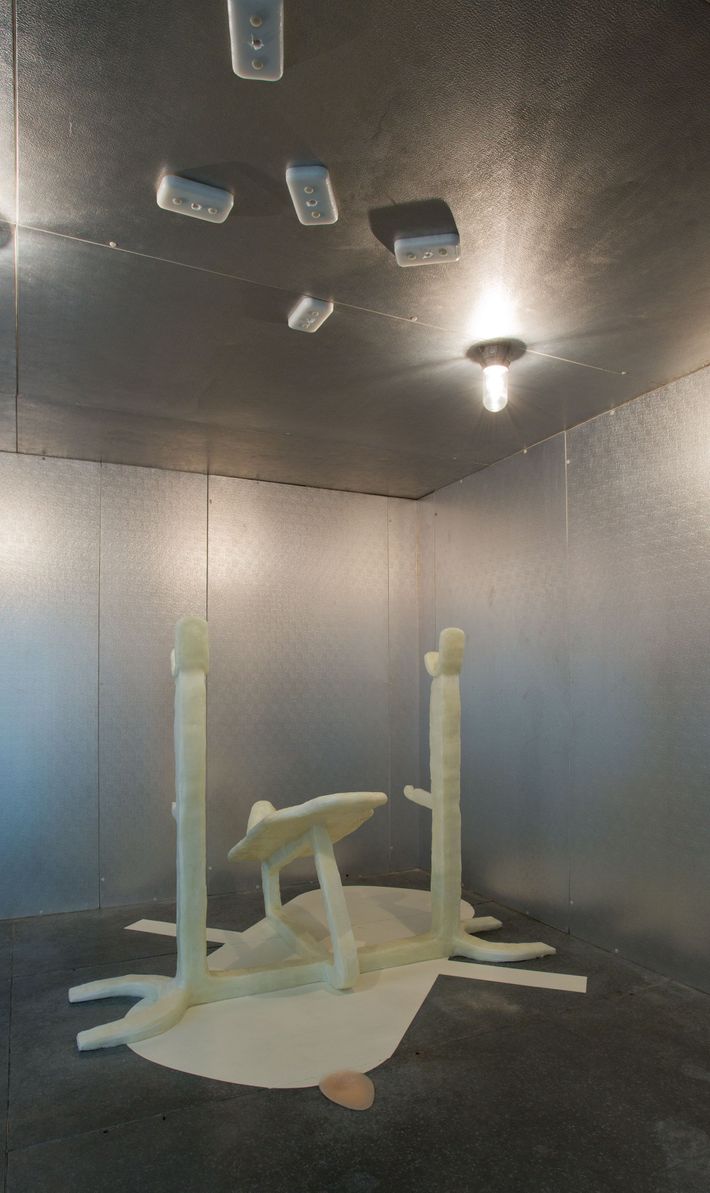
Just when everything seemed like it would only expand, the stock market crashed. The art market collapsed shortly thereafter. Galleries closed, prices fell, artists of the early 1980s faded and went out of favor. It got ugly as people were shooting the wounded. By the time Barney debuted Jeff Koons had essentially been banned from the art world for his hyperrealistic photographic paintings featuring him and his wife having sex. He hasn’t been included in a Whitney Biennial or Documenta since. One night then-unknown artist Trisha Donnelly dressed as a Napoleonic solider, rode a white horse into the 14th Street gallery of Casey Kaplan and made an announcement that “the emperor was dead.” Amen. Another night I remember sampling a room-length line of cocaine placed on the floor of an artist’s loft by Rob Pruitt.
Amen again. One night I watched the unknown Chris Ofili standing his canvasses outside the tiny storefront of Gavin Brown Gallery, finishing his paintings by street lamp. I got a phone call from someone named Damien Hirst asking me if I knew where he could buy a cheap used old Cadillac so he could take a classic cross-country American road trip. Everything hit the fan on May 1, 1993, in a death ritual of the 1980s. That night I witnessed an elaborate dinner for art star Anselm Kiefer featuring writhing dancers, a floor covered in white sand, and raw pig served to millionaires. It was the twilight of the 1980s gods; I have a memory of David Salle saying “They’re going to kill us all,” and then leaving.
The art world he was describing was already, in many ways, gone. All around us, artists were being decimated by AIDS; the culture wars had erupted. Everything became radicalized. This was a highly unstable atmosphere of decay, falling prices, and closing galleries. But at the same time older galleries were retooling on a dime. Barbara Gladstone was one of those dealers. In fact, Barney was set to have his Gladstone debut at the Petersburg Gallery, then under the directorship of the legendary curator and spotter-of-talent Clarissa Dalrymple. But in the way that galleries did back then — and are starting to do now — Petersburg suddenly went out of business. That’s how Barney ended up at Gladstone. They birthed and rebirthed one another.
In this erratic environment of politics and nothing-to-lose energy, nascent art fairs appeared; Frieze Magazine came into being, as did the entire British art scene; the Cologne-based German art world decamped to the newly opened super-cheep Berlin; new collectors and writers turned up everywhere; a slew of big-brained fast-moving independent curators organized shows all over the world. Unlike our moment of culling the 1960s and 1970s for artists left behind, these curators worked almost exclusively with new artists; the traveling culture of biennials mushroomed. All this made the art world feel genuinely open. Even without the internet everyone was comparing notes, gleaning what was going on as if by aesthetic osmosis; what art fairs might be worth trying? Which artists were making inroads? What ideas might work? Which ones were falling by the wayside? There was no money so everyone was momentarily on the same very scary yet nevertheless level playing field.
This is the convulsive moment Barney emerged in. In the now-defunct Arts Magazine I wrote a three-page article on Barney’s work before his show. No editor questioned this. Then — in something I don’t recall happening since 1958, when Jasper Johns was on the cover of Art News before his New York debut — Barney appeared on the cover of Artforum before his Gladstone show. Within a year, Barney was given multiple venues in Documenta 9; the next year he was featured in the legendary 1993 Whitney Biennial — as a legitimate identity artist, no matter his status as a straight white male. By 2003 he had a full-on show at the Guggenheim, the youngest artist ever to have done so.
Barney’s Gladstone show opened on October 19, 1991, to a smallish crowd. I was there. And at the bar afterward, there wasn’t much of a sense of any of this being especially momentous. Just another night in this indeterminately altering climate. But then I remember Gladstone being packed almost every day thereafter. People seemed to know a corner was being turned. Something was happening here. Something big. (I had this feeling shortly thereafter again at a 1994 Drawing Center opening featuring RISD graduate Kara Walker’s giant cut-out-paper wall mural of the antebellum South that set the back of my head on fire and made me know that a modern Goya had come into the land to join Barney’s Boschian self.)
I had had a premonition about Barney the night before his opening. That evening one of the most hyperaware, articulate, gifted artists of the late 1980s, Ashley Bickerton— who many say was among the first to identify Barney when he was still a Yale undergraduate — was celebrating his own show that was to open at the vaunted Sonnabend Gallery the following evening. At the time, Bickerton was a key figure of a group of artists who emerged in the mid-1980s that included Koons, Peter Halley, and Haim Steinbach; part of a movement dubbed Neo Geo. These artists had started showing in the East Village, all left their galleries for the mighty Soho powerhouse Sonnabend, and captured the limelight and money at the end of the decade. On this night in 1991, however, Bickerton — ever the insightful magician — knew something else was in the air. In a small Soho bar I saw Bickerton and the young Damien Hirst standing around Barney. Then, as now, Barney was not a scenester; he was quiet, always in his studio. Now even as one of the most famous artists alive you don’t see him at parties or in life-style magazines. He just works in his own world. But Bickerton ascertained a new essence in the offing — and what it meant in a larger sense. Late that night I remember Bickerton embracing Barney with genuine love and mouthing over and over again, “I’m nothing, man. You’re it.”
The seer Bickerton was half right: Bickerton himself is still making excellent work. That night he was only suffering a garden-variety spate of the bad medicine known as preshow self-hate. But right there, right then, Bickerton was spot-on: Barney was an “it.” For me he’s still one of the vents into the deepest recesses of art, narrative, and material imagination. More so than ever.
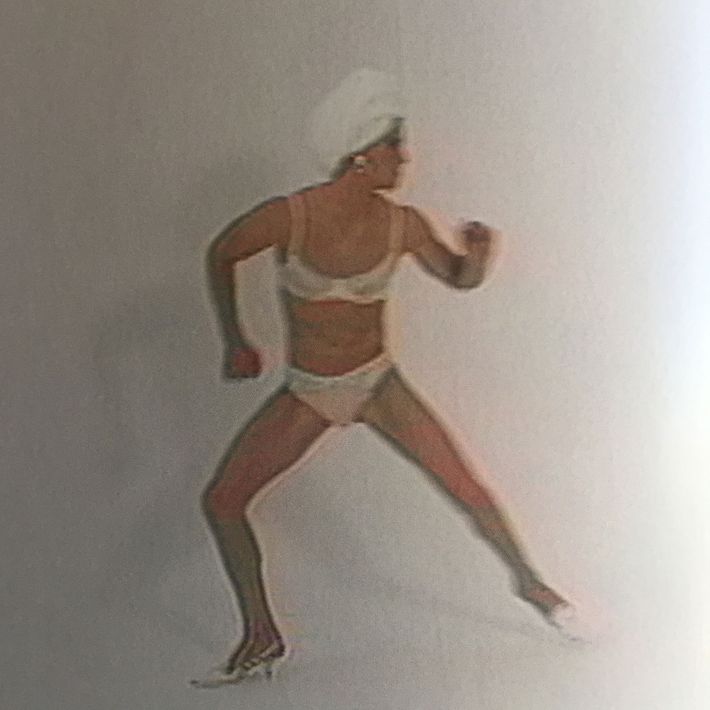
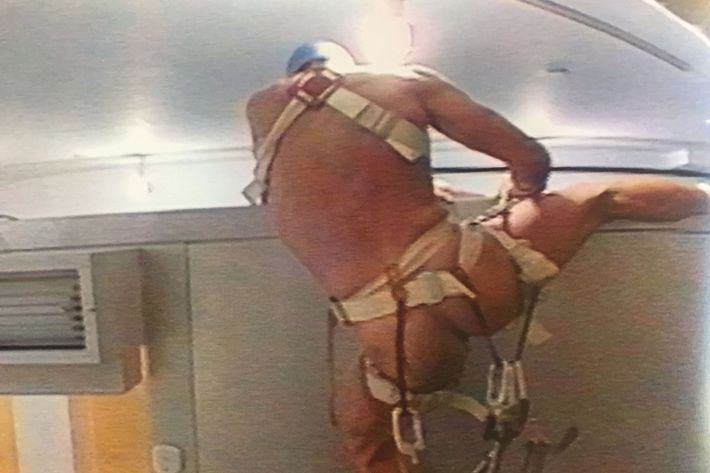
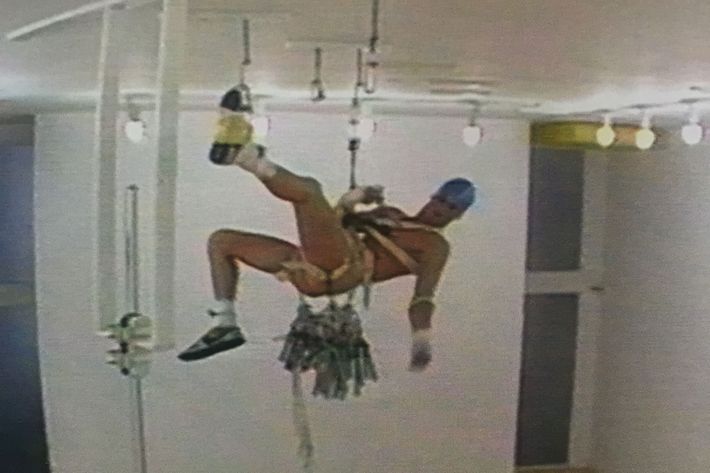
“Matthew Barney: Facility of Decline” at Gladstone Gallery through October 22.
*A version of this article appears in the October 17, 2016, issue of New York Magazine.

